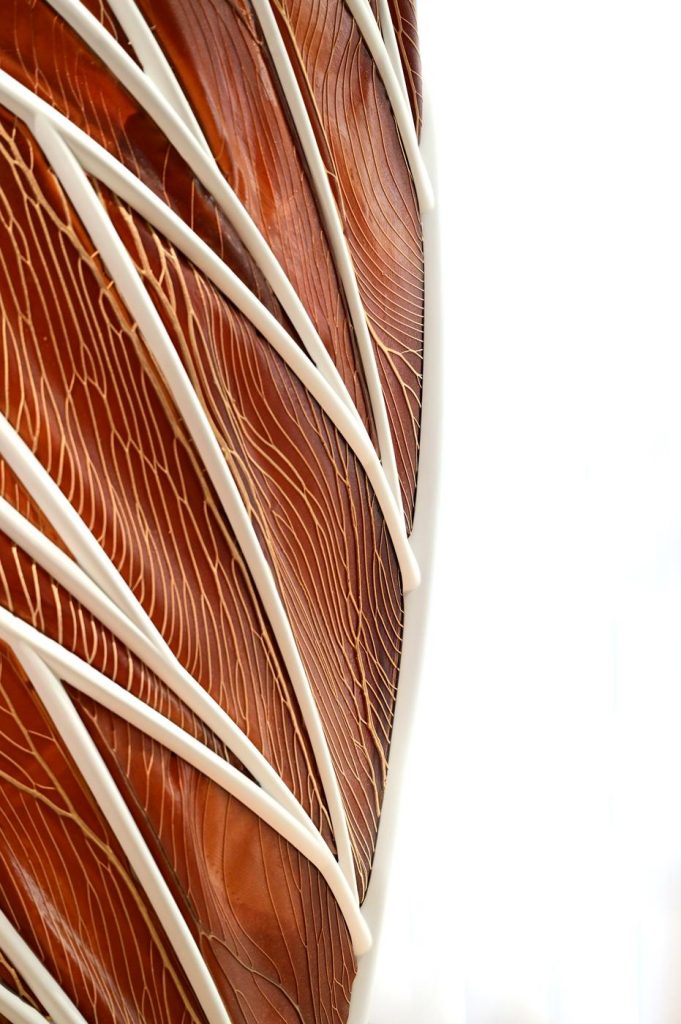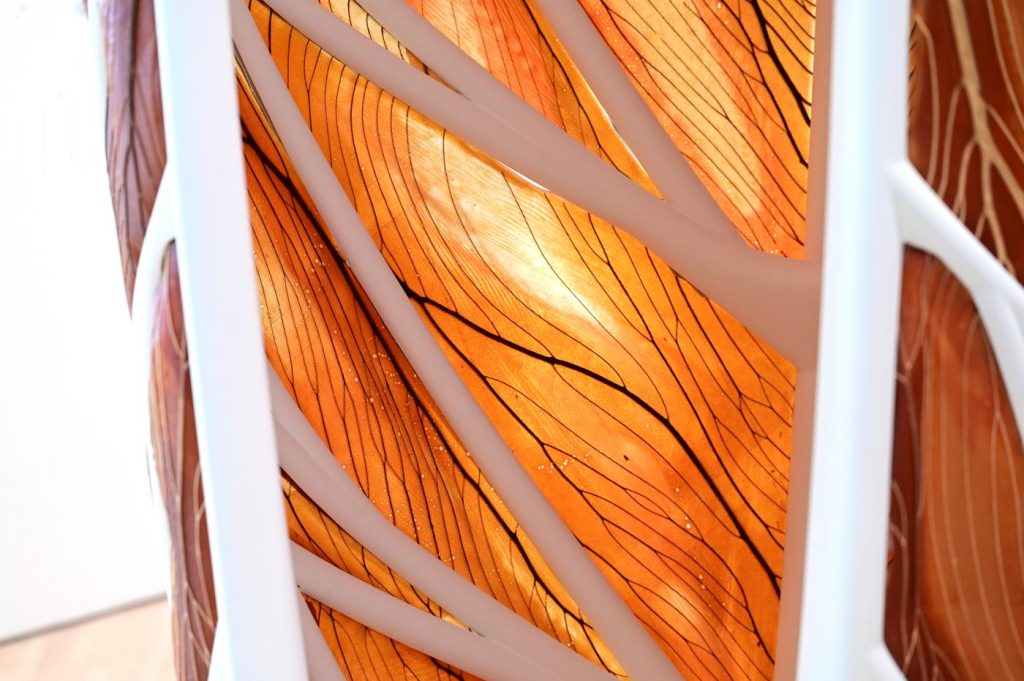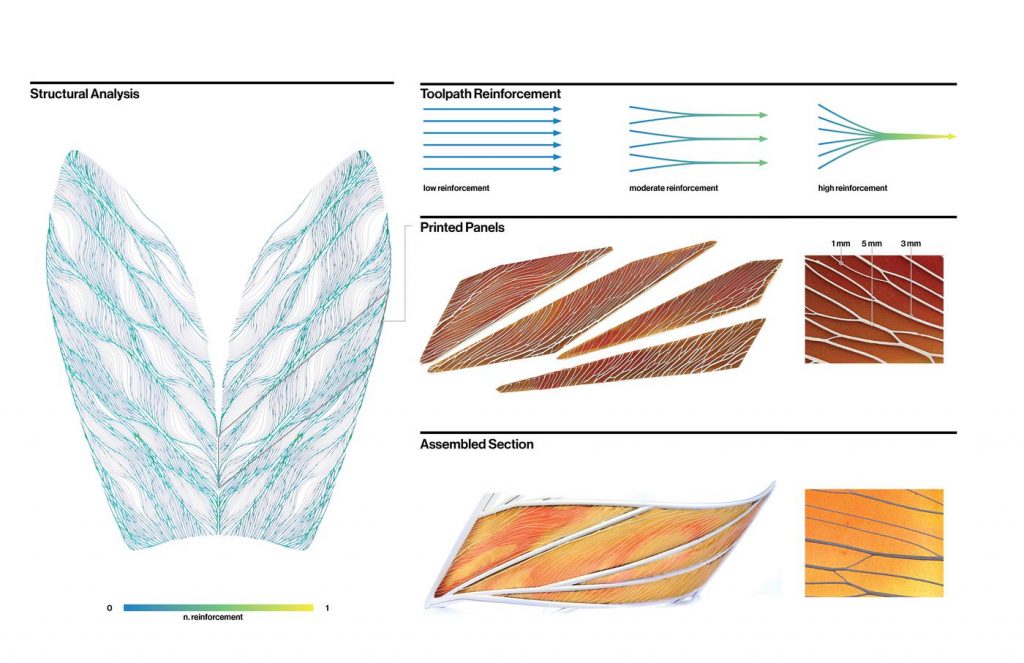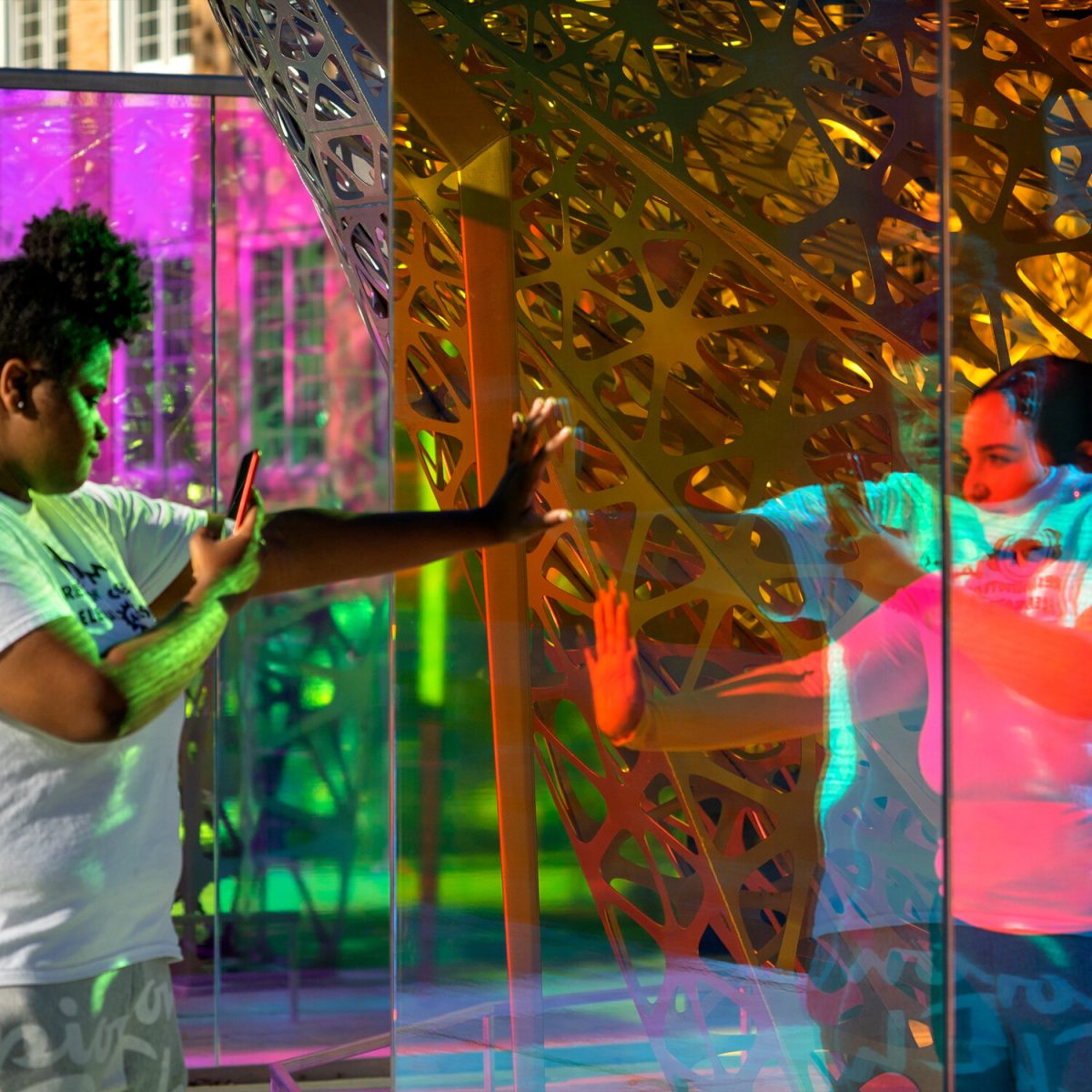I looked into the MAAD architecture thesis projects from the CMU School of Architecture. In particular, the work of professor Joshua Bard. What interested me about some of his work is the fact that I had actually taken his introductory class dealing with computational design. I was able to learn a few basic ideas on how to set up parameters to computational change a design, but looking further into his work, it’s interesting how he takes biological forms and ideas and applies the idea of mathematics and logics to it to generate modules. This made me think about how a ton of architecture is heavily influenced by the biology of the world and I often her the word “biomimicry” around the discussion of computational architecture and design. In many ways, without the development and advancement of the computer and the capabilities of a few functions, these newer generations of architectural design may not be as computational as they are now.
http://joshbard.com/Category: LookingOutwards-03
Looking Outwards – 03
The project that I picked is 3D-printed houses that are being fabricated by SQ4d. This project is being carried out in different locations in New York and is printing sustainable and affordable housing. They are using a 3D printer made out of aircraft-grade aluminum and have the capability to print any material, right now specifically printing mortars and concrete.

This company has been printing houses since it was founded in 2017. The director of operations is Kirk Andersen and his goal is to speed up the production of homes while lowering the cost overall and the environmental impact. The company is a collection of engineers, designers, architects, and tech specialists which work in an interdisciplinary manner to engineer and produce these projects. I have linked a podcast from Kirk Andersen, the SQ4D website, and a news article about the company.

Looking Outwards-03
The project I choose is “Rocailles” by Benjamin Dillenburger. It’s a digital fabrication model made by 3D printing. The general shape is a curvature dynamic surface, and by bending and delicate arrangement, the model presents a circular flower shape. I’m attracted by the flower shape, the curve flows have a sense of fluidity and coherence, and the trend of the shape leads the audience’s eye to the hole, trying to explore more things about the project.
The advanced production methods highly increase the development of these high-resolution forms, specifically in this project, spaces between every curve are filled with some X shape. I think the algorithm and fabrication parameters are more integrated with the initial design stage, and then the database served as an information exchange platform.
The way they use digital fabrication explores a new paradigm in architecture, also in a more open manner, which is a good inspiration for future building development.
and here is a link: https://benjamin-dillenburger.com/rocaille/
LO week3
http://www.johnedmark.com/
I am so fascinated by John Edmark’s Golden Angle – Bloom (http://www.johnedmark.com/phifib/2016/4/28/blooms-strobe-animated-phi-based-sculptures). The work is by 3d printing, the shape itself is amazing enough, it’s the golden and sweet spot where math and art intersect. The ratio is called phi (ϕ), the same ratio that nature employs to generate the spiral patterns we see in pinecones and sunflowers.
That reminds me of when I made spirals, the number is so difficult to find, and the most beautiful curve is defined by only a few numbers that I had to test out. Then I got into this rabbit hole: Fermat’s spiral (https://flyingpudding.com/projects/florets/applet/) trying to figure out how the mathematical format is associated with the image. And I feel emotional about how the universe is created in a perfect way and we humans get to study it.
Not only the shape itself of the 3D printing object itself but the way he presents it – a video in which the object spins. I didn’t realize the magic until I looked deep – the object looks smoothly blooming. According to the artist “Rather than using a strobe, the camera was set to a very short shutter speed in order to freeze individual frames of the spinning sculpture. ”By then, the artist adds another dimension to the work – time. And with camera technology, made this magic happen.
Looking Outwards – 03
I’ll be reviewing a series of kaleidoscope, high-speed camera photos by photographer Linden Glenhill. The series of photos capture water droplets reflecting against an LED Ring light, as they react to the vibration of faraday waves. What I know about the project is that the droplets create complicated oscillating patterns at half the frequency of the oscillating faraday wave, and that the higher the frequency, the more complicated the pattern, this makes sense as the droplets can be seen as a visual representation of the frequency. I really enjoys these kinds of projects as they create literal visualizers for audio, a more abstract sense for humans to comprehend opposed to visuals.
Computational Fabrication
One of the projects that I admire that involves computational fabrication is 3D printed prosthetics. Specifically, there is a project where veterinarians from ZooTampa and the director of 3D clinical applications at USF came up with the idea of 3D printing a prosthetic for a bird who had to get its beak removed. The prosthetic ended up saving the bird’s life. First, they used CT scans to make sure that the prosthetic fit properly, then the scans were used to develop and print a guide. This helped the doctors perform the surgery and make sure that when the original beak was removed, the prosthetic would be able to accurately take its place. The team used something called BioMed White resin (which is relatively new material), to make the beak. This method can not only be used for animals, but eventually for humans and other species. With this type of technology and ability, we would be able to save countless lives of both animals and humans.

Picture of the bird saved by prosthetic.
SydneyCha-LookingOutwards-03

Aguahoja III is an organic 3D creation made with cellulose bound with other natural materials (lignin, pectin, etc.) to form a strong sculpture that has both aesthetic and structural properties. It is part of a creation line by the MIT Media Lab and is specifically the third iteration of their Aguahoja series.
This project and the process through which it was created feels both organic and mechanical.

Aguahoja III uses a flexible generative design method that assigns a bipolymer skin to any input geometry and calculates the required parameters to actually print and create the sculpture. To put it simply, the algorithm generates the design and process simultaneously, making the physical rendering of the sculpture much more efficient.

Though made with an algorithm, the Media Lab creators’ decision to use biodegradable materials and their aesthetic choices are clearly present in this project. The piece in its own existence sends a message of responsible and environmentally conscious art,
Looking Outward 03
Looking Outwards 03: Computational Fabrication
The most interesting point of this project is applying this kind of parametric designed panel to the building envelope. Also, the parametrically designed façade used for this building is not only for decoration purposes but also for the bad-air-busting. The form of the panel was first designed in CAD programs and created in the software called Rhino. Even though they didn’t mention a lot about the creation process, I suppose that they used grasshopper and BMI system so that the overall shape and form can vary according to the changing parameter. I think the most important characteristic that makes this project wonderful is that the impressive façade can also increase the surface area of the building, and it can bring more natural light into the building, which creates a better place for people inside. Also, having TiO2, which is an air-scrubbing material coated outside the surface, can maximize the effect of air purification when the sunlight gets stronger.

Looking Outward Blog 03
Image 1 Shows the part of the structure, and how people interacts with the project.
https://www.jennysabin.com/polyform
I am looking at the project “PolyForm” constructed by Cornell University. What
What I admire about this project is its ability to achieve organic shapes through
the repetition of somewhat geometric surfaces. I really like the modular system
of using the same geometric logic and through repetition, creating something
complex and organic. What is also really like is that the structure seems to
be enclosed in a transparent box, an illusion created by the glass walls
around the structure, making the piece latch onto a surface.
I suppose the algorithm works by initially creating a geometric pattern that
mimics the patterns of nano-leveled cellular structure and creates a system
through parametric generation to achieve the ideal density of the material and
empty spaces in the project to generate the form. Then the structure would be
together to assemble the project.
The project is a collaboration between the school of architecture and the
college of human ecology within the university, thus it is apparent the
creators would have a higher appreciation of biomimicry structure. The
creators have supported this idea where they claim the concept is to bridge
the nanoscale to the human scale.
Looking Outwards-03, Section A
I thought the piece by David Bizer was particularly inspirational. He used the timeline of an audiofile and then 3D printed it to create a jewelry piece for someone saying, “I love you.” I thought this piece was really cool because of how Bizer captures something that is typically thought to not be tangible. I just think it is a neat way to convey a message.
The algorithms must be able to pick up sound and then return different lengths of lines based on the sound.
The creator’s artisitic vision is shown in this piece because of the materials he chooses to make. Even though the shape of the piece is determined by the sound file, he chooses the material used.
Here is the link to the piece by David Bizer (2015).
![[OLD SEMESTER] 15-104 • Introduction to Computing for Creative Practice](../../wp-content/uploads/2023/09/stop-banner.png)
